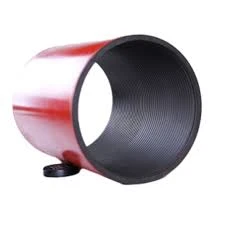- Afrikaans
- Albanian
- Amharic
- Arabic
- Armenian
- Azerbaijani
- Basque
- Belarusian
- Bengali
- Bosnian
- Bulgarian
- Catalan
- Cebuano
- Corsican
- Croatian
- Czech
- Danish
- Dutch
- English
- Esperanto
- Estonian
- Finnish
- French
- Frisian
- Galician
- Georgian
- German
- Greek
- Gujarati
- Haitian Creole
- hausa
- hawaiian
- Hebrew
- Hindi
- Miao
- Hungarian
- Icelandic
- igbo
- Indonesian
- irish
- Italian
- Japanese
- Javanese
- Kannada
- kazakh
- Khmer
- Rwandese
- Korean
- Kurdish
- Kyrgyz
- Lao
- Latin
- Latvian
- Lithuanian
- Luxembourgish
- Macedonian
- Malgashi
- Malay
- Malayalam
- Maltese
- Maori
- Marathi
- Mongolian
- Myanmar
- Nepali
- Norwegian
- Norwegian
- Occitan
- Pashto
- Persian
- Polish
- Portuguese
- Punjabi
- Romanian
- Russian
- Samoan
- Scottish Gaelic
- Serbian
- Sesotho
- Shona
- Sindhi
- Sinhala
- Slovak
- Slovenian
- Somali
- Spanish
- Sundanese
- Swahili
- Swedish
- Tagalog
- Tajik
- Tamil
- Tatar
- Telugu
- Thai
- Turkish
- Turkmen
- Ukrainian
- Urdu
- Uighur
- Uzbek
- Vietnamese
- Welsh
- Bantu
- Yiddish
- Yoruba
- Zulu
6 inch well casing coupling options for enhanced drilling performance and durability solutions.
Understanding 6-Inch Well Casing Couplings
When it comes to constructing and maintaining wells, ensuring the integrity of the well casing is crucial. One key component of the well casing system is the coupling, especially in the context of a 6-inch well casing. This article delves into the significance of these couplings, their types, materials, applications, and best practices for installation.
What is a Well Casing?
A well casing is a tube typically made of steel or plastic that is installed in a borehole to provide structural integrity and to prevent the collapse of the well. It also serves to protect the well from contamination by keeping surface water out and allowing for the safe extraction of groundwater. The diameter of the casing must be appropriate for the well’s design, and 6 inches represents a widely used standard size.
The Role of Couplings
Couplings are short sections of pipe used to connect two lengths of casing. They are essential in ensuring a secure, leak-proof connection and play a vital role in the overall durability and performance of the well. Properly constructed and installed couplings help to maintain the well’s structural integrity and prevent potential water contamination.
Types of Couplings
There are several types of couplings that can be utilized for 6-inch well casings, including
1. Threaded Couplings These couplings feature internal threads that screw onto the threaded ends of the casing pipes. They provide a strong mechanical connection, making them a popular choice for many installations.
2. Welded Couplings In some cases, welded couplings may be preferred. They are welded directly to the casing pipes, creating a permanent bond that can be highly effective in applications where movement or stress is expected.
3. Slip Couplings These couplings slide over the ends of two casing sections and can be secured with bolts or other means. They are particularly useful in situations where accessibility is a concern or where the alignment of the casing might be problematic.
Material Considerations
6 inch well casing coupling

The material of the coupling is as important as its type. Common materials include
- Steel Known for its strength and durability, steel couplings are often galvanized or coated to resist corrosion, which is crucial in water applications
.- PVC For applications where corrosion is a significant concern or where the well environment is less demanding, PVC couplings provide a lightweight, non-corrosive alternative.
- Stainless Steel In environments exposed to harsh chemicals or high salinity, stainless steel couplings are essential, offering excellent corrosion resistance and longevity.
Best Practices for Installation
1. Alignment Proper alignment of the casing sections before securing the coupling is crucial. Misalignment can lead to stress concentrations and premature failure.
2. Torque Specifications When using threaded couplings, follow the manufacturer’s torque specifications to ensure a secure seal without damaging the threads.
3. Inspection Regular inspection of couplings and casing sections is essential to identify any signs of wear, corrosion, or misalignment, allowing for timely repairs.
4. Professional Guidance When in doubt, consulting with professionals experienced in well construction and maintenance can help ensure the right materials and methods are utilized.
Conclusion
The use of a 6-inch well casing coupling is a significant aspect of well construction that can impact performance and longevity. By understanding the types, materials, and installation practices associated with these couplings, well operators can enhance the efficiency and reliability of their water extraction systems, ensuring they serve the community effectively for years to come.
-
Tubing Pup Joints: Essential Components for Oil and Gas OperationsNewsJul.10,2025
-
Pup Joints: Essential Components for Reliable Drilling OperationsNewsJul.10,2025
-
Pipe Couplings: Connecting Your World EfficientlyNewsJul.10,2025
-
Mastering Oilfield Operations with Quality Tubing and CasingNewsJul.10,2025
-
High-Quality Casing Couplings for Every NeedNewsJul.10,2025
-
Boost Your Drilling Efficiency with Premium Crossover Tools & Seating NipplesNewsJul.10,2025







